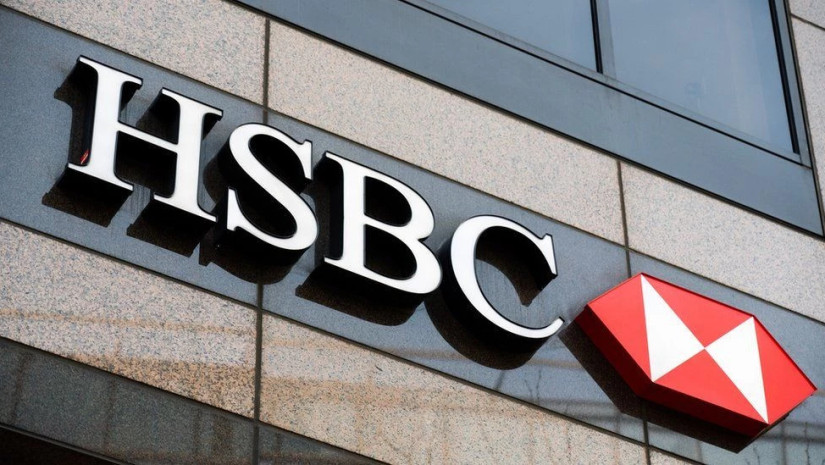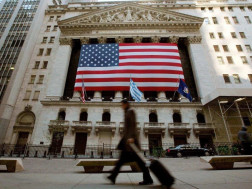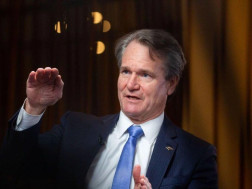The U.S. will enter a downturn in the fourth quarter, followed by a “year of contraction and a European recession in 2024,” according to HSBC Asset Management.
In its midyear outlook, the British banking giant’s asset manager said recession warnings are “flashing red” for many economies, while fiscal and monetary policies are out of sync with stock and bond markets.
Joseph Little, global chief strategist at HSBC Asset Management, said while some parts of the economy have remained resilient thus far, the balance of risks “points to high recession risk now,” with Europe lagging the U.S. but the macro trajectory generally “aligned.”
“We are already in a mild profit recession, and corporate defaults have started to creep up too,” Little said in the report seen by CNBC.
“The silver lining is that we expect high inflation to moderate relatively quickly. That will create an opportunity for policymakers to cut rates.”
Despite the hawkish tone adopted by central bankers and the apparent stickiness of inflation, particularly at the core level, HSBC Asset Management expects the U.S. Federal Reserve to cut interest rates before the end of 2023, with the European Central Bank and the Bank of England following suit next year.
The Fed paused its monetary tightening cycle at its June meeting, leaving its fed funds rate target range at between 5% and 5.25%, but signaled that two further hikes can be expected this year. Market pricing narrowly anticipates the fed funds rates to be a quarter percentage point higher in December of this year, according to CME Group’s FedWatch tool.
HSBC’s Little acknowledged that central bankers will not be able to cut rates if inflation remains significantly above target — as it is in many major economies — and said it is therefore important that the recession “doesn’t come too early” and cause disinflation.
“The coming recession scenario will be more like the early 1990s recession, with our central scenario being a 1-2% drawdown in GDP,” Little added.
HSBC expects the recession in Western economies to result in a “difficult, choppy outlook for markets” for two reasons.
“First, we have the rapid tightening of financial conditions that’s caused a downturn in the credit cycle. Second, markets do not appear to be pricing a particularly pessimistic view of the world,” Little said.
“We think the incoming news flow over the next six months could be tough to digest for a market that’s pricing a ‘soft landing.’”
Little suggested that this recession will not be sufficient to “purge” all inflation pressures from the system, and therefore developed economies face a regime of “somewhat higher inflation and interest rates over time.”
“As a result, we take a cautious overall view on risk and cyclicality in portfolios. Interest rate exposure is appealing — particularly the Treasury curve — the front end and mid part of the curve,” Little said, adding that the firm sees “some value” in European bonds, too.
“In credit, we are selective and focus on higher quality credits in investment grade over speculative investment grade credits. We are cautious on developed market stocks.”
Backing China and India
As China emerges from several years of stringent Covid-19 lockdown measures, HSBC believes that high levels of domestic household savings should continue to support domestic demand, while problems in the property sector are bottoming out and government fiscal efforts should create jobs.
Little also suggested that comparatively low inflation — consumer prices rose by a two-year monthly low of 0.1% in May as the economy struggles to get back to firing on all cylinders — means further monetary policy easing is possible and GDP growth “should easily exceed” the government’s modest 5% target this year.
HSBC remains overweight on Chinese stocks for this reason, and Little said the “diversification of Chinese equities shouldn’t be underestimated.”
“For example, value is outperforming growth in China and Asia. That’s the opposite of developed stock markets,” he added.
Along with China, Little noted that India is the “main macro growth story in 2023” as the economy has recovered strongly from the pandemic on the back of resurgent consumer spending and a robust services sector.
“In India, recent upward growth surprises and downward surprises on inflation are creating something of a ‘Goldilocks’ economic mix,” Little said.
“Improved corporate and bank balance sheets have also been boosted by government subsidies. All the while, the structural, long run investment story for India remains intact,” CNBC reports.
















